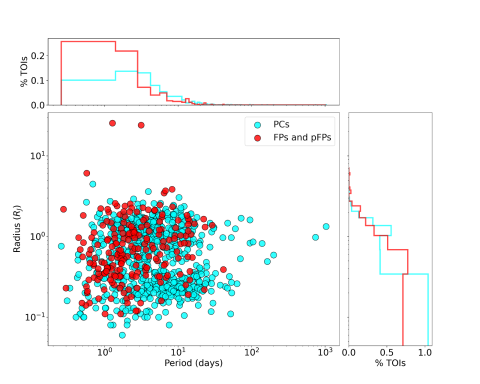You’ll sleep better tonight knowing 142 imposter planet candidates no longer roam the skies. Those suspicious characters were apprehended and placed under custody by volunteer Planet Patrollers who met through NASA’s Planet Patrol Citizen Science project.
You can read all about this work in a new paper they published in the Monthly Notices of the Royal Astronomical Society. “The TESS Triple-9 Catalog II: a new set of 999 uniformly-vetted exoplanet candidates.” Eleven volunteers are co-authors of the new paper.
“Planet Patrol is the first Citizen Science Project I have ever joined, and I feel impressed by the results a dedicated team of enthusiastic people can achieve,” said Christian Magliano, the paper’s lead author. “Unless the entire workload is distributed among many expert eyes, it is unfeasible to thoroughly examine 999 TESS planet candidates in less than a year.”
The Planet Patrol project invited members of the public to examine data from NASA’s Transiting Exoplanet Survey Satellite (TESS) mission. TESS is a space-based telescope launched in 2018 that has been monitoring tens of millions of stars spread all over the sky, seeking a tiny dimming in the starlight caused by the passage of a planet. A critical step in data analysis is to rule out astrophysical sources like variable stars, eclipsing binary systems, or even instrumental artifacts that mimic a planetary signal.
“Regular communication that includes virtual hangouts has also been key to developing a strong sense of belonging and fellowship that constitutes one of the cornerstones for the development of citizen science,” says Hugo Durantini Luca, a citizen scientist and paper co-author, “The potential to keep refining the catalogs generated by Planet Patrol so far and cross-matching it with other projects to generate new discoveries and expand the collaborative aspects of science are boundless.”
Planet Patrol volunteers are trained to conduct a deep vetting analysis and use additional data from astronomical databases whenever needed. In the first batch of data they examined, they vetted 999 planet candidates and spotted 146 imposters. This new second batch doubles the sample of genuine candidates available for follow-up study. Among these 1998 planet candidates, 286 were identified as clear false positives and 251 as potential planet impostors. These catalogs dramatically ease the burden of follow-up observation campaigns and provide a robust human-based record to train neural network models.
For more information on how to participate, go to https://Exoplanetpatrol.org
NASA’s Citizen Science Program:
Learn about NASA citizen science projects
Follow on Twitter
Follow on Facebook





































